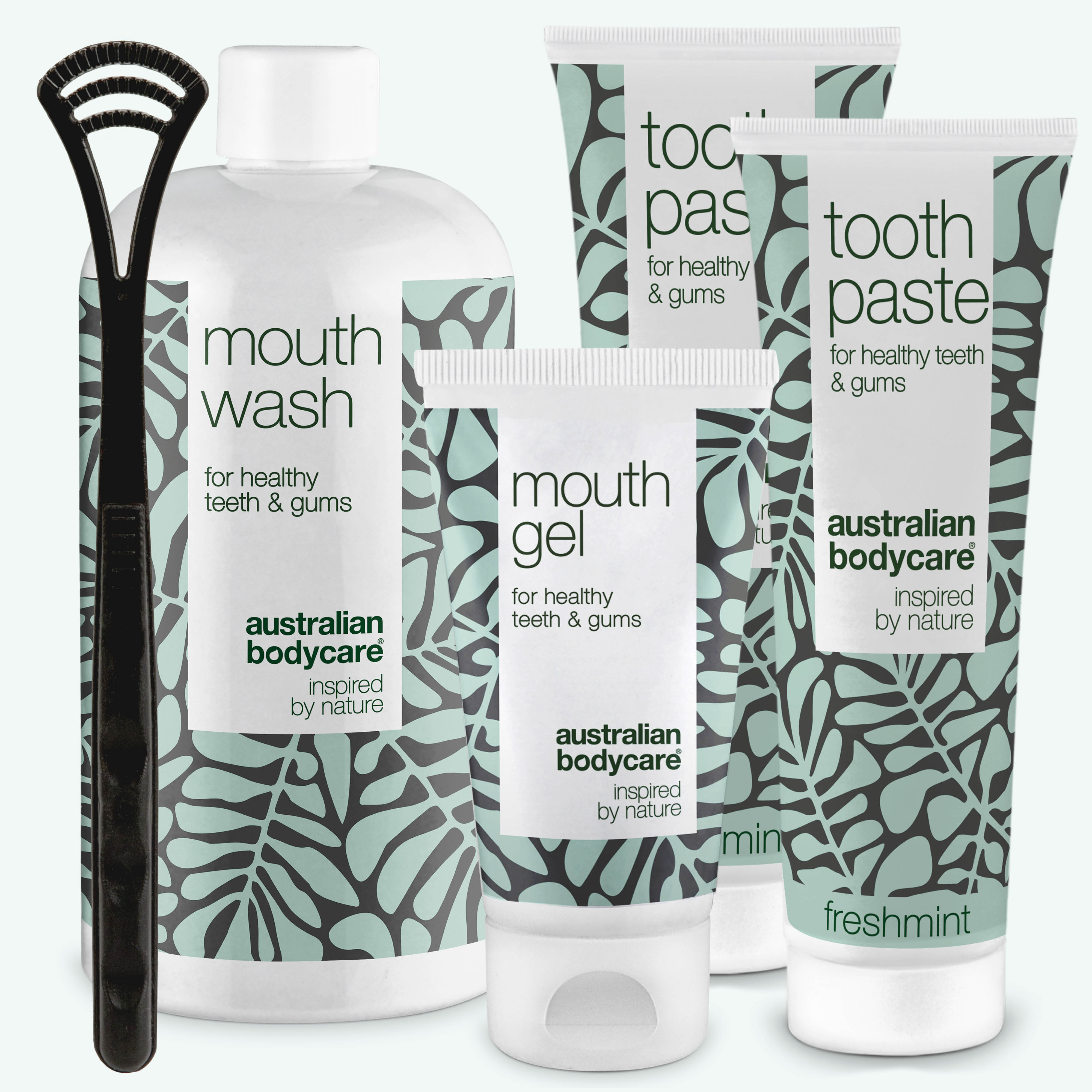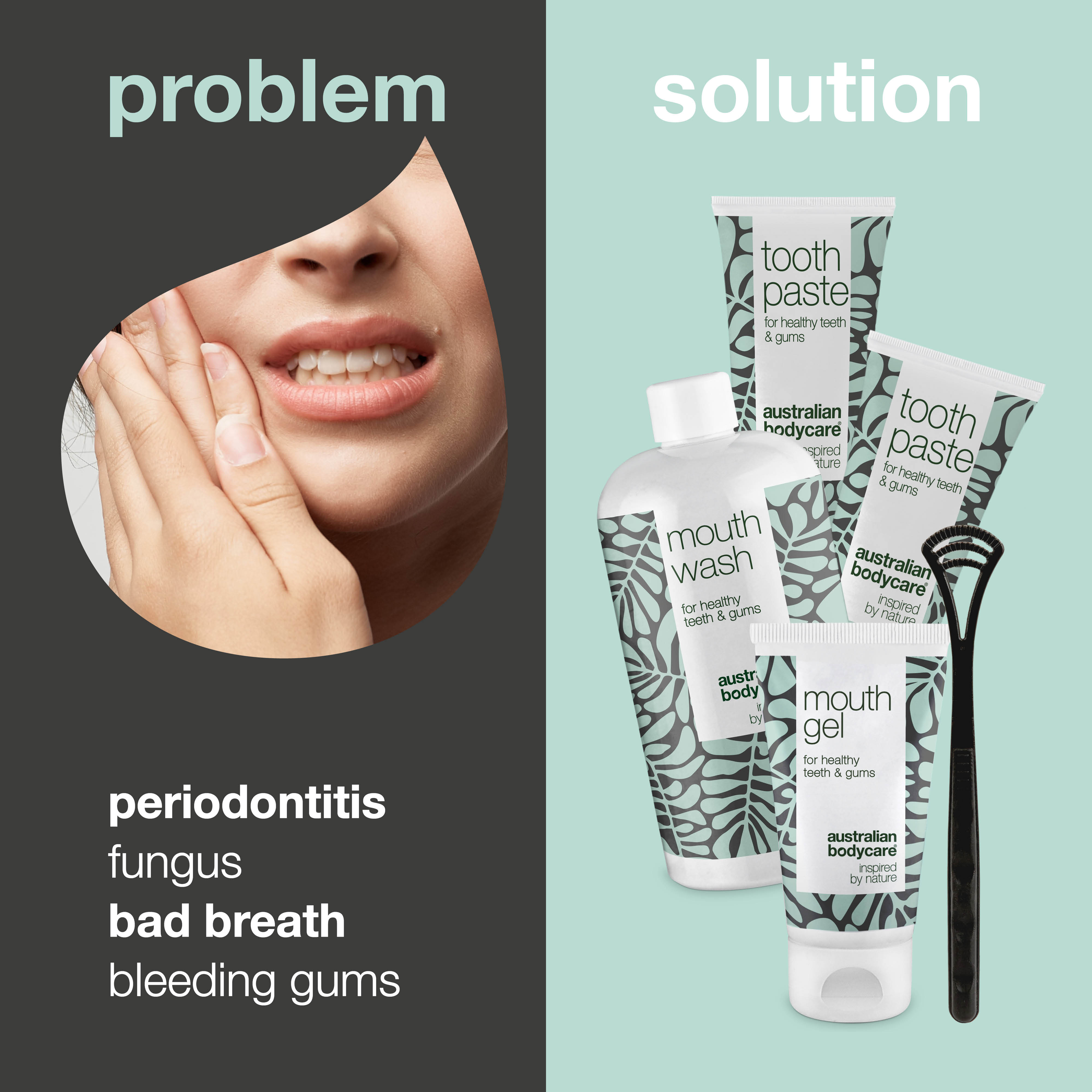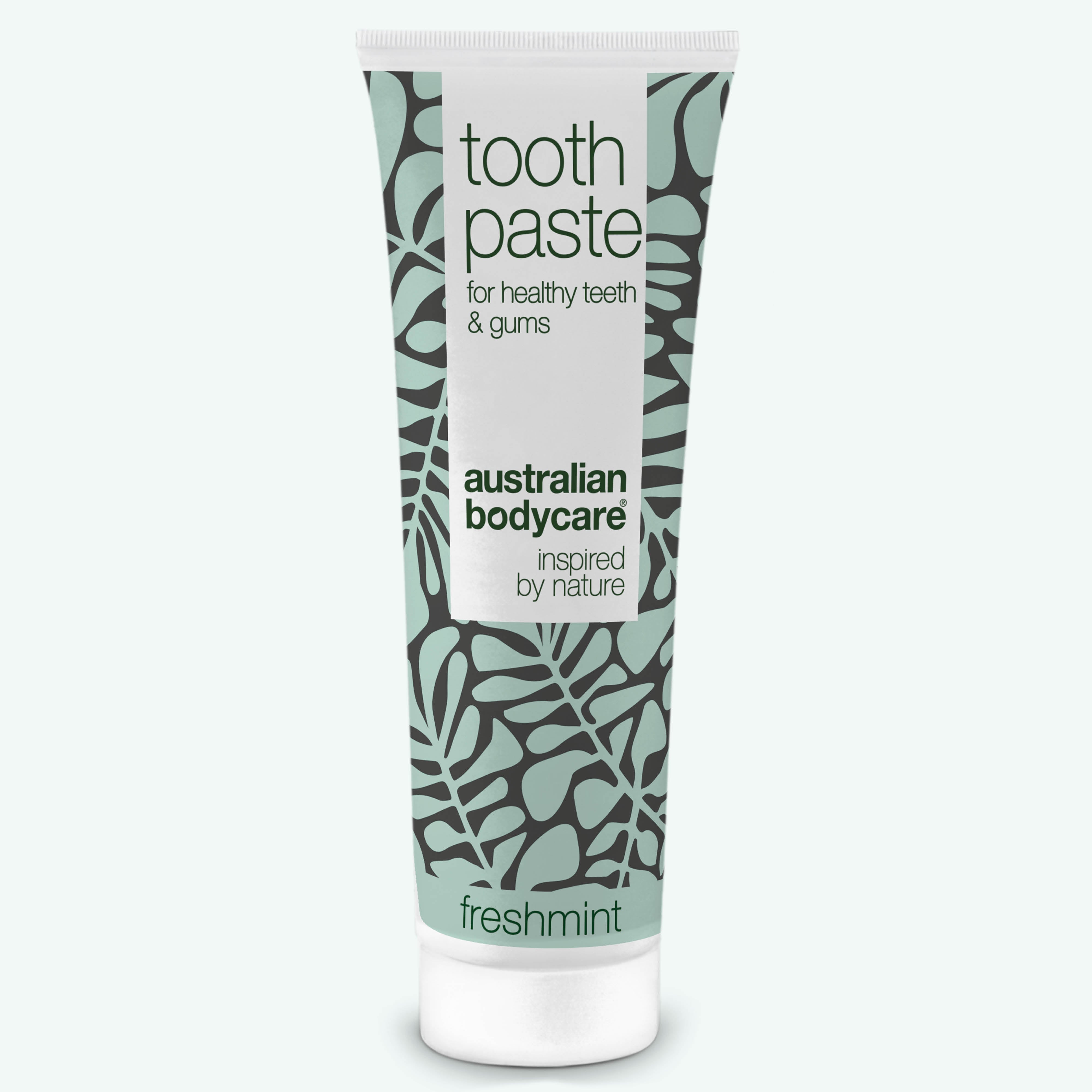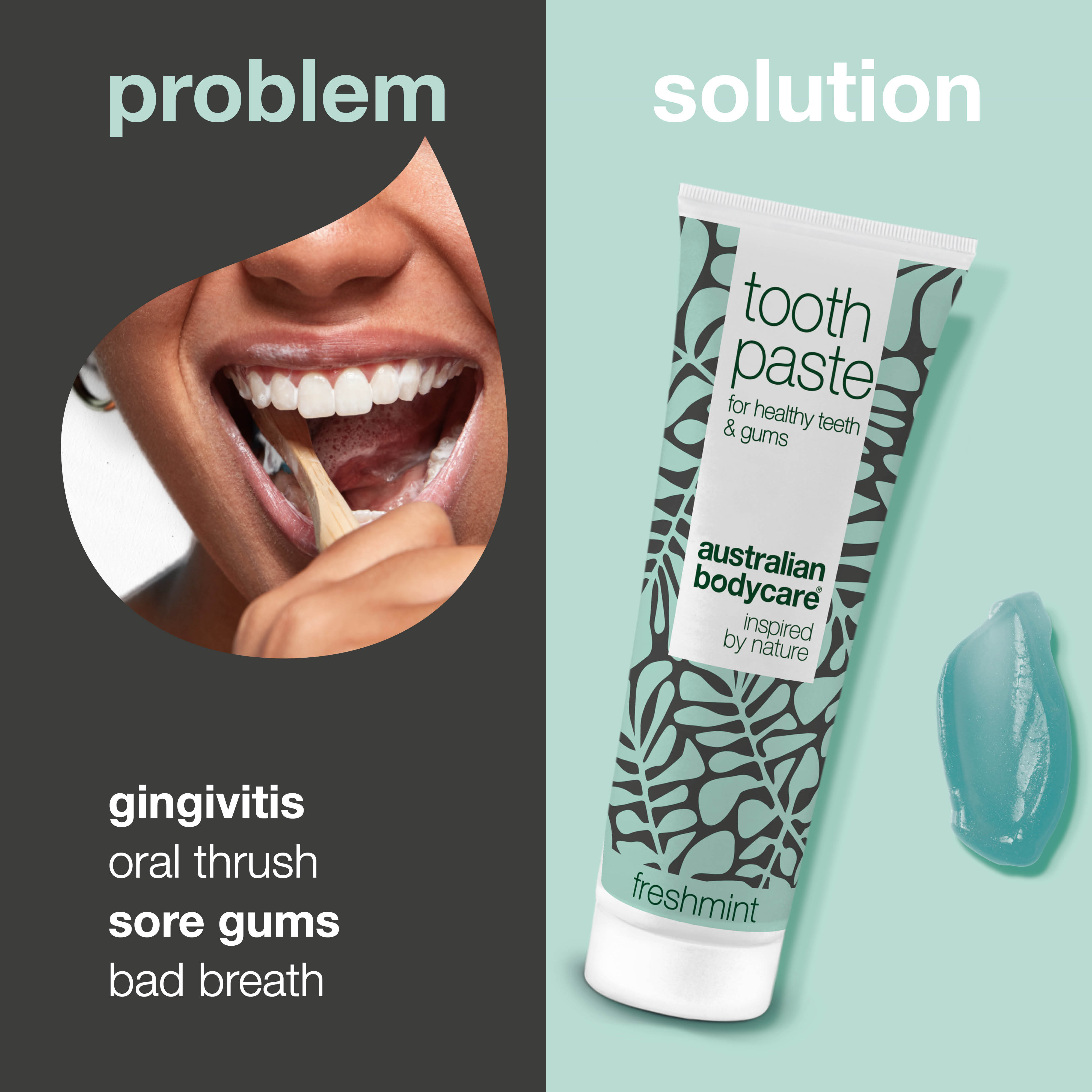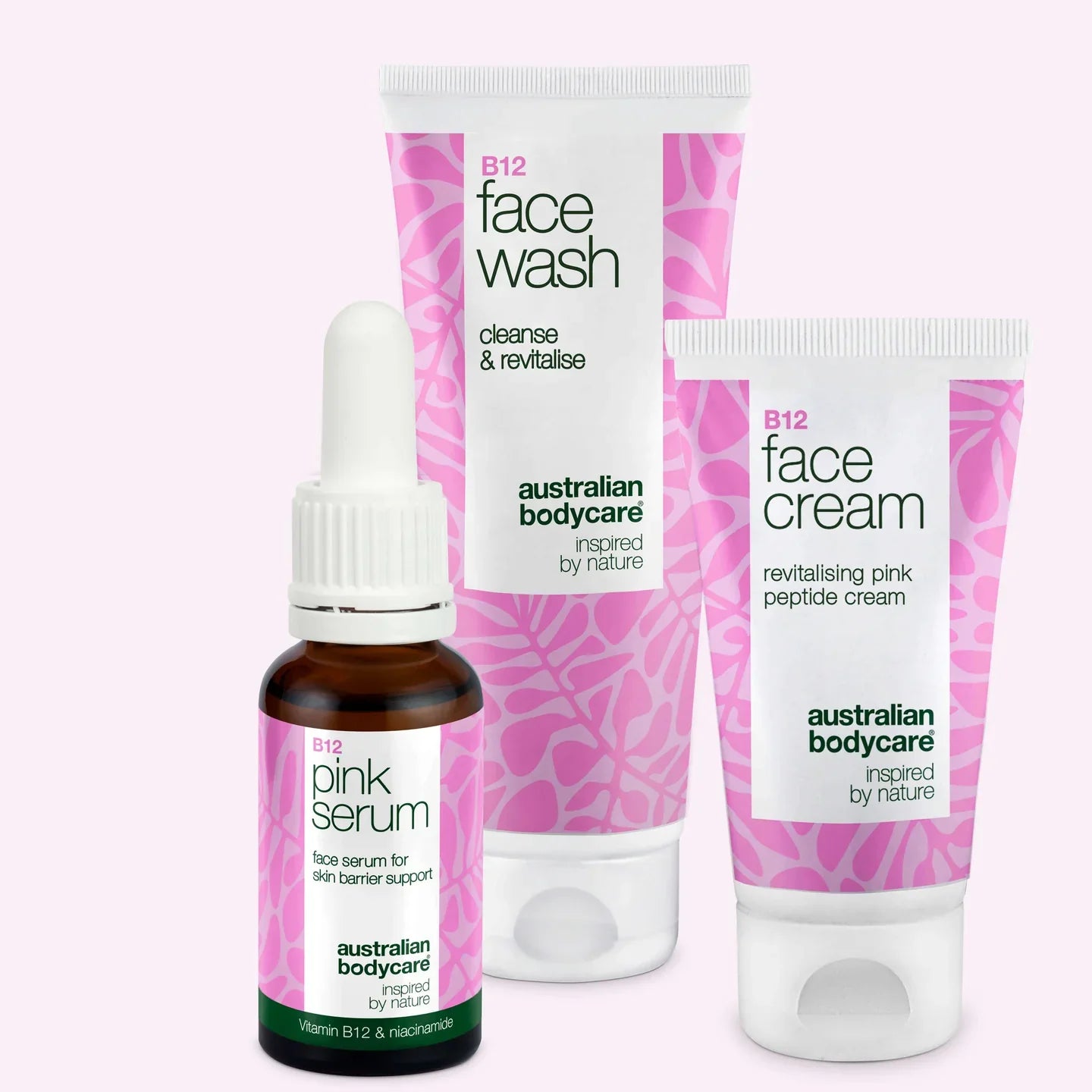Understand the difference: Fluor in toothpaste VS toxic fluoride substances
Maybe you've heard about fluor in toothpaste. Or... is it maybe fluor substances? Yes, there is actually a difference. And it's a big one.
Fluor in toothpaste is good for the teeth and the tooth enamel. Should not be confused with toxic perfluoro alkylated substances, that can be found in food packaging and cleaning supplies.
In this article we take a look at the basic differences, so that you can get a better understanding. Read more and discover why dentists recommend fluor toothpaste for your teeth.
Table of contents
What is the difference between fluor and fluoride?
Fluor is an element, which can be found in our skeleton, drinking water and different foods. It can also be called fluoride, because it is an ion, which combined with other ions create salts like sodium fluoride. It is exactly this chemical compound – fluoride salt, that can be found in toothpaste.
There are many different types of fluor, which is why the fluor in your toothpaste, isn’t the same as the fluor In pizza boxes and bags of microwave popcorn.
The substance can be divided into problematic and organic substances. You will learn more about the difference down below.
Toxic fluor substances
Many wrongly confuse the fluoride, that can be found in toothpaste, with the toxic perfluoro alkylated substances known as PFAS. Fluor substances are chemical substances, which are artificially crafted, and which have a long decomposition time when placed out in nature.
These substances can end up in animal and human organs, where they are suspected to weaken the immune system, as well as cause cancer and an increase in cholesterol.
Fluor substances are often used in order to make raincoats or baking sheets water – and fat-resistant. You can find them in Teflon, and in different products used to package food, as well as cleaning supplies. It can also be found in highly toxic products like rat poison and nerve gas.
Fluor substances found in toothpaste
The inorganic fluor substances hold, unlike the toxic variety, positive qualities. Inorganic fluor can be found as what we call fluoride, which helps stop the development of caries (holes in the teeth), which is why toothpaste usually contains fluor.
For the same reason, this is usually the type of toothpaste that most dentists will recommend. This is why Australian Bodycare’s toothpaste also contains fluor.
Fluor in toothpaste is not dangerous
There has been a lot of talk in media about fluor or fluoride. Cause even the non-toxic type of fluor can cause stomach problems and poisoning if you consume a very large amount.
This would however require a very high intake of one gram fluor.
Toothpaste is only permitted to contain 0.15 gram per 100 gram, which means you would have to consume a very large amount of toothpaste on the same day, to be at risk.
It would be the same as eating six tubes of toothpaste, almost all at once.
So, you can safely brush your teeth with fluor toothpaste – the low concentration makes the substance completely unharmful.
It’s recommended to apply toothpaste, the size of a pea or the nail on your little finger, whenever brushing your teeth. For this reason, it’s not realistic to talk about toothpaste with fluor being a threat to your health. being a threat to your health. It would require you to consume ridiculous amounts in one day, to put you at risk.
Why does toothpaste contain Fluor?
Fluor has a unique ability to protect your teeth efficiently against caries and stops the development of cavities early on. It also protects your teeth from acid, that can be found in many types of food and drink.
Fluoride toothpaste protects the tooth enamel, which you can tell after using the toothpaste for a longer period. If you drink a lot of highly acidic drinks like soda and juice, it could be a good idea to use fluoride toothpaste.
Because the substance also can stop the development of cavities in the teeth, it could be a good idea to use the tooth paste to prevent future cavities and dental problems.
What are the benefits of fluor in toothpaste?
Here is a list of the benefits of fluor in toothpaste:
- Preventing caries: Helps you strengthen the enamel on your teeth and makes them more resistant, so that you can avoid the early stages of cavities.
- Getting rid of plaque: Helps in minimising the amount of plaque, that can accumulate on the teeth, by stopping bacteria growth.
- Better aesthetics: Can help improve the aesthetics of your teeth by preventing discoloration, so that your teeth remain white.
Prevent teeth problems with our fluor toothpaste
If you wish to prevent caries and strengthen the enamel of your teeth, you should use tooth paste with fluor, just like most dentists recommend.
You can also kill two birds with one stone by using our Tea Tree Oil toothpaste, which contains 1450 ppm fluor and helps you prevent bleeding gums or bad breath.
1450 ppm means that 1450 grams from 1.000.000 gram toothpaste is fluor. This is the amount you typically find in most tubes of toothpaste, but even though it doesn’t seem like much, it’s enough to give your teeth the best protection.
Besides fluor and zinc, the toothpaste includes Tea Tree Oil, which counteracts bacteria and protects the tooth enamel against caries. Meanwhile it also helps you keep your breath fresh during the day, when you brush your teeth in the morning.
Use the toothpaste for daily care of your teeth
Tooth paste from Australian Bodycare can be used for sore gums and when caring for bleeding gums and periodontitis. You can brush your teeth with the toothpaste twice a day – morning and evening.
Follow these simple steps:
- Wet your toothbrush and apply a one cm strip of toothpaste.
- Brush your teeth thoroughly for at least two minutes. It’s important that ALL the teeth get rinsed – also remember the teeth in the back.
- Spit out the remaining toothpaste.
You don’t have to rinse your mouth after, as it’s healthy for the teeth, if the toothpaste gets to work on the teeth. For this reason, it’s always a good idea to wait at least 30 minutes before eating, drinking or using a mouth wash.
Is toothpaste without Fluor as efficient?
Worldwide research is so convincing, that there really is no question. More than 100 experiments show that people have a lot more cavities, if they haven’t been using a toothpaste with fluor, compared to the people who have.
The fear of fluor-poisoning has caused many people to switch to a tooth paste without fluor – despite the research done.
Everyone needs to decide for themselves, about whether or not the positive effect of preventing cavities outweighs the risk of fluor poisoning, when consuming a large amount of toothpaste, all at once.
If unsure, you can always ask your dentist.
Q&A
How much toothpaste should you use?
You should use around a cm of toothpaste, every time you brush your teeth. This will equal the amount of a pea or the nail on your little finger.
What is fluor?
Fluor is an element, which protects the teeth and strengthens the enamel.
What is fluoride?
Fluoride is a chemical substance, which can also be called Fluor. It should not be confused with toxic perfluoro alkylated substances, which amongst other things can be found in cleaning supplies, pizza boxes, food packaging and microwave popcorn.
How much fluoride should there be in toothpaste?
The amount of fluor is stated in the list of content on the toothpaste tube. Adults should brush their teeth with 1450 to 1500 ppm fluor toothpaste (and use around 1 cm toothpaste on the toothbrush).
Kids under 3 years are recommended to use a toothpaste with a maximum of 1100 ppm, but this can depend on the amount of fluor in the drinking water of your council.


